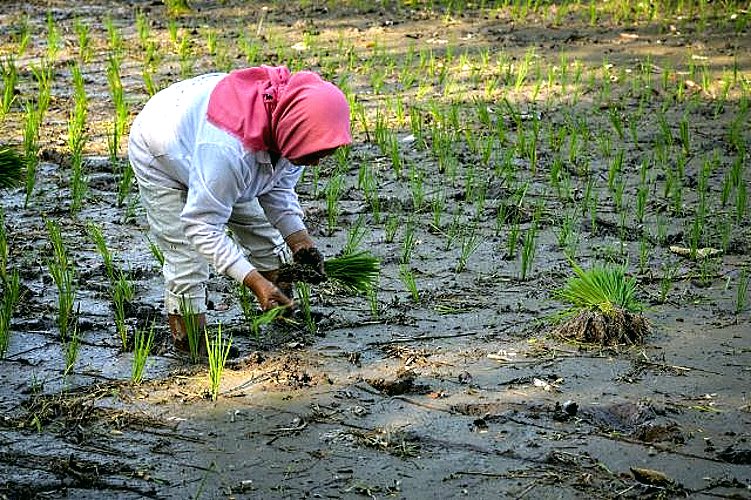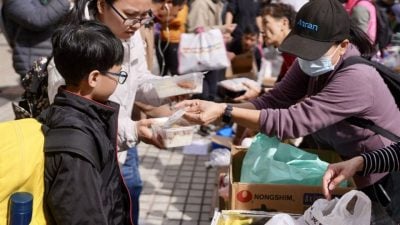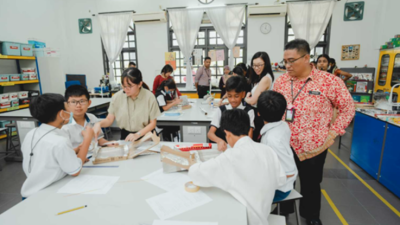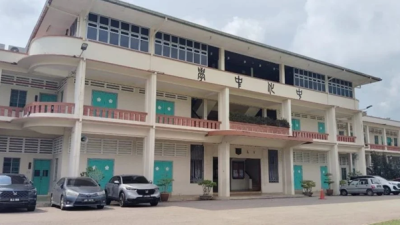
ASEAN, a region that heavily depends on rice as a crucial staple food, has grappled with fluctuations in global rice prices over the past month with prices rising steeply due to climate disruptions such as floods, heat waves and other extreme weather conditions.
All Rice Price Index of the Food and Agriculture Organization (FAO) reached 142.4 in August, marking a 31 percent increase from the previous year, driven by a global rice shortage and export restrictions imposed by India since July.
In Malaysia, locally produced rice has become scarce. Local rice production can only meet 70 percent of domestic demand.
Currently, many supermarkets and small grocery stores often have empty shelves because 5 and 10-kilogram bags of local rice are quickly snapped up by customers as soon as new stock arrives.
This scarcity is attributed to the growing price disparity between locally produced rice and imported varieties.
In Malaysia, local rice is a government-regulated food item with a price cap of RM26 per 10 kilograms. Imported rice had generally been more expensive than local rice, even before the recent global price hikes.
The Philippine government is also implementing the same policy by setting a price ceiling, the maximum allowable selling price for consumers. This policy establishes an upper limit of 41 pesos (RM3.40) per kilogram for regular and 45 for well-milled rice.
Undoubtedly, this policy also has the same implication: the occurrence of rice scarcity due to the price ceiling not being supported by a substantial rice reserve only exacerbates the shortages.
Indonesia faces the same difficulties due to the skyrocketing global rice prices. According to the National Strategic Food Price Information Center, the rice price in Jakarta increased by an average of Rp130 (RM0.04) per kg from Rp14,550 (RM4.37) per kg in the first week of August to Rp15,200 (RM4.57) per kg in the second week of September.
The purchase of subsidized rice branded-name (SPHP) rice is restricted to a maximum of two bags of SPHP rice, with each bag weighing 5 kg, in all modern retail outlets in Indonesia to prevent panic buying.
Meanwhile, ASEAN countries that are positioned as rice exporters, such as Thailand, Vietnam and Cambodia, tend to limit or reduce their rice exports as a precautionary measure against the transmission of rice price fluctuations in the international market, especially after the Indian government restricted rice exports in July to safeguard its domestic interests.
A crucial lesson from global food price fluctuations over the past two decades was that the recurring underlying triggers of food price surges were climate change, conflicts (wars) and pandemics, all of which were global shocks that were nearly impossible to address individually by nations. Inward-looking or protectionist measures by each country can exacerbate crisis conditions.
For example, we can refer to the World Bank (2019) report, which indicated that protectionist policies, such as the ones exemplified above, implemented during the 2010-2011 food crisis, contributed as much as 40 percent to the increase in world wheat prices and a quarter to global corn prices, resulting in 8.3 million people becoming impoverished.
The World Bank’s findings underscored how the use of trade policy interventions to protect domestic markets by many countries can have negative implications, not benefiting the population and even exacerbating poverty.
The ASEAN rice market is integrated, where price increases in one country can be transmitted to other ASEAN countries.
Therefore, it is crucial for every ASEAN member country, when considering food security, to avoid inward-looking policies and instead emphasize a broader perspective, namely the interests of ASEAN food security, especially since eight out of 10 ASEAN member countries are categorized as middle-income countries.
Populations in middle-income countries are the most vulnerable to spikes in international food prices. It means that addressing the impacts of food price volatility is in the best interest of most ASEAN countries and should be handled collectively.
In the context of food security cooperation, ASEAN is already making significant progress with the presence of the ASEAN Plus Three Emergency Rice Reserve (APTERR), established in 2012.
It is a collaboration between the 10 ASEAN member countries and their three external partners: China, Japan and South Korea.
The primary goal of the APTERR is to address rice supply instability in the region and mitigate the adverse effects of food crises.
According to Teng and Darvin (2019), the APTERR’s role still needs to be improved.
The APTERR primarily focuses on providing emergency rice supplies to countries suffering an acute shortage. This phenomenon means that the APTERR has not yet played a significant role in stabilizing rice prices and supplies in the region, which was the primary objective behind its establishment.
ASEAN countries should enhance their commitment to achieving stability and rice supply in the ASEAN region.
Although the introduction of the ASEAN Economic Community in 2015 has successfully reduced import tariffs for agricultural products within the ASEAN region, it has not significantly increased agricultural commodity trade within ASEAN due to high trading costs (transportation costs, trade policy barriers and distribution costs).
ASEAN’s commitment needs to be reinforced to facilitate essential staple food trade, such as rice, within ASEAN through the following measures:
1. Expediting customs clearance cooperation and simplifying customs clearance processes for rice exports and imports.
2. Reducing or even eliminating non-tariff barriers for rice exports and imports and enhancing the formation of information networks for quarantine and food safety cooperation related to rice.
3. Providing shared information about rice stocks, reserves, surpluses, deficits and production in ASEAN countries.
4. Prioritizing the fulfillment of rice needs for ASEAN countries classified as net importers by ASEAN countries positioned as rice exporters in the event of international rice price disruptions.
ADVERTISEMENT
ADVERTISEMENT








































